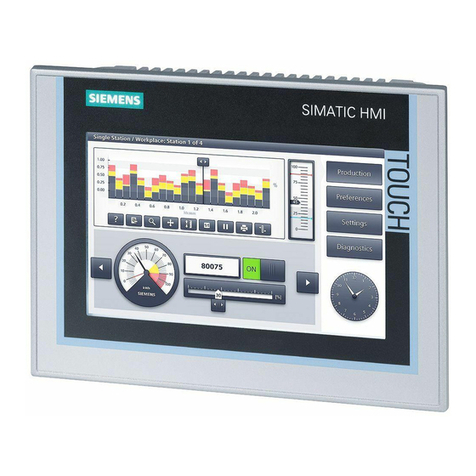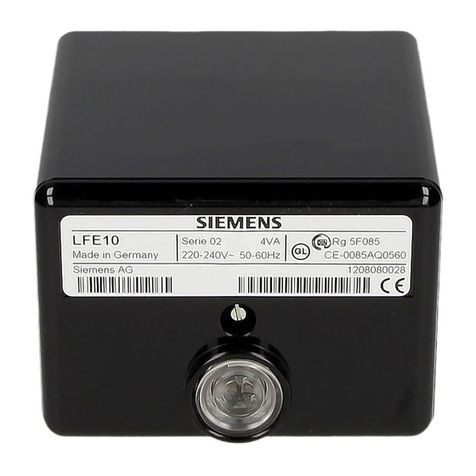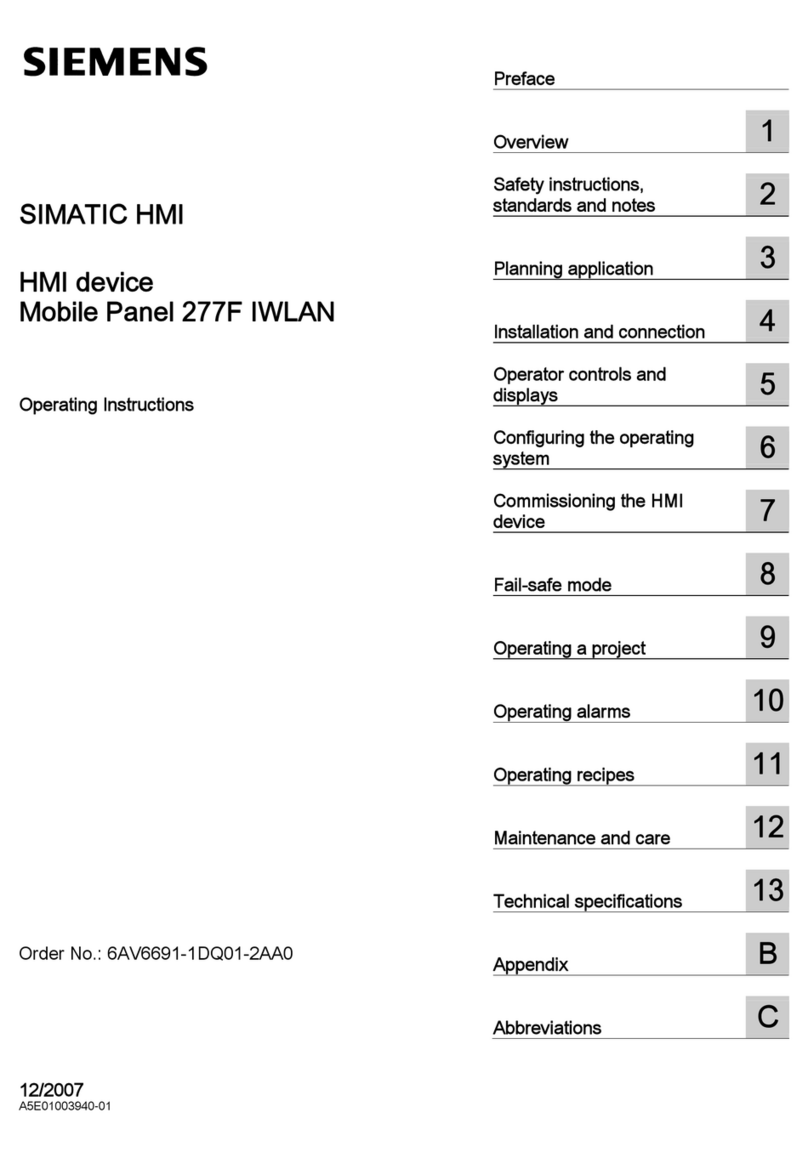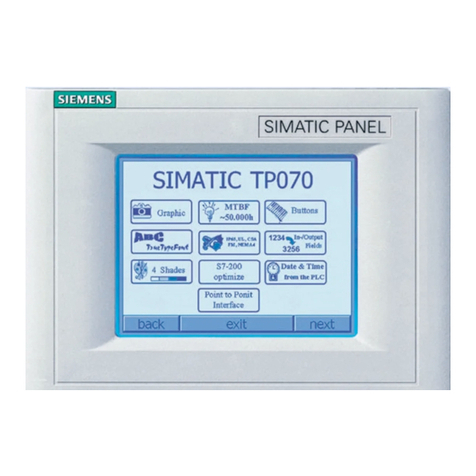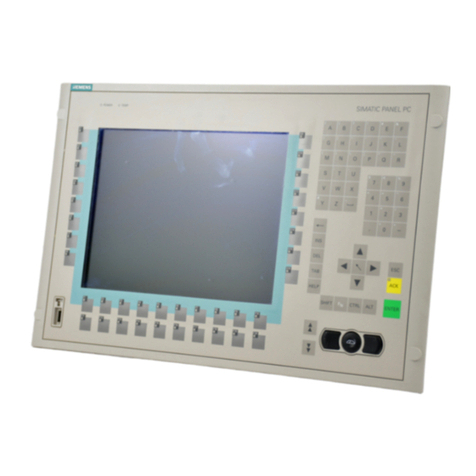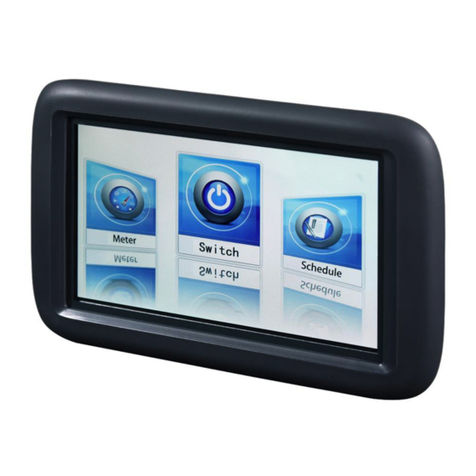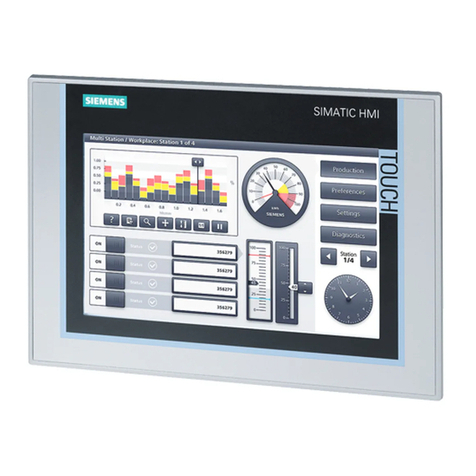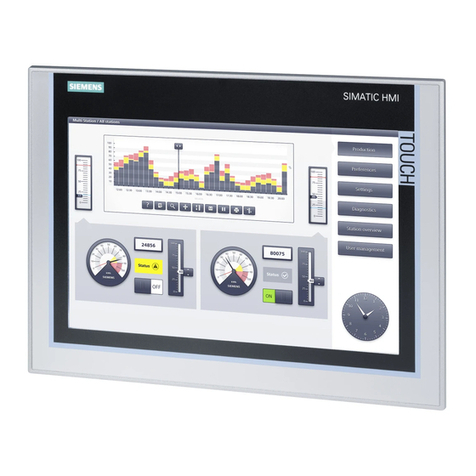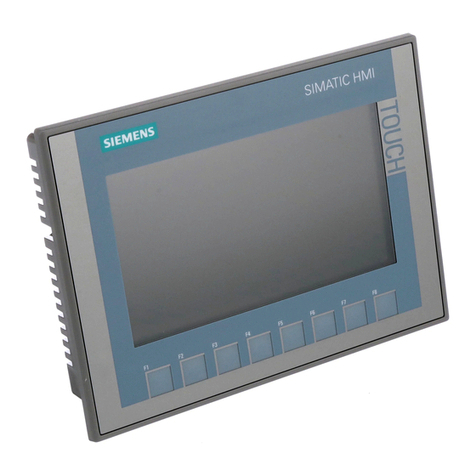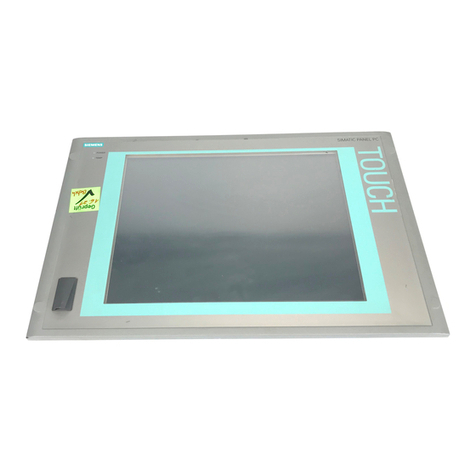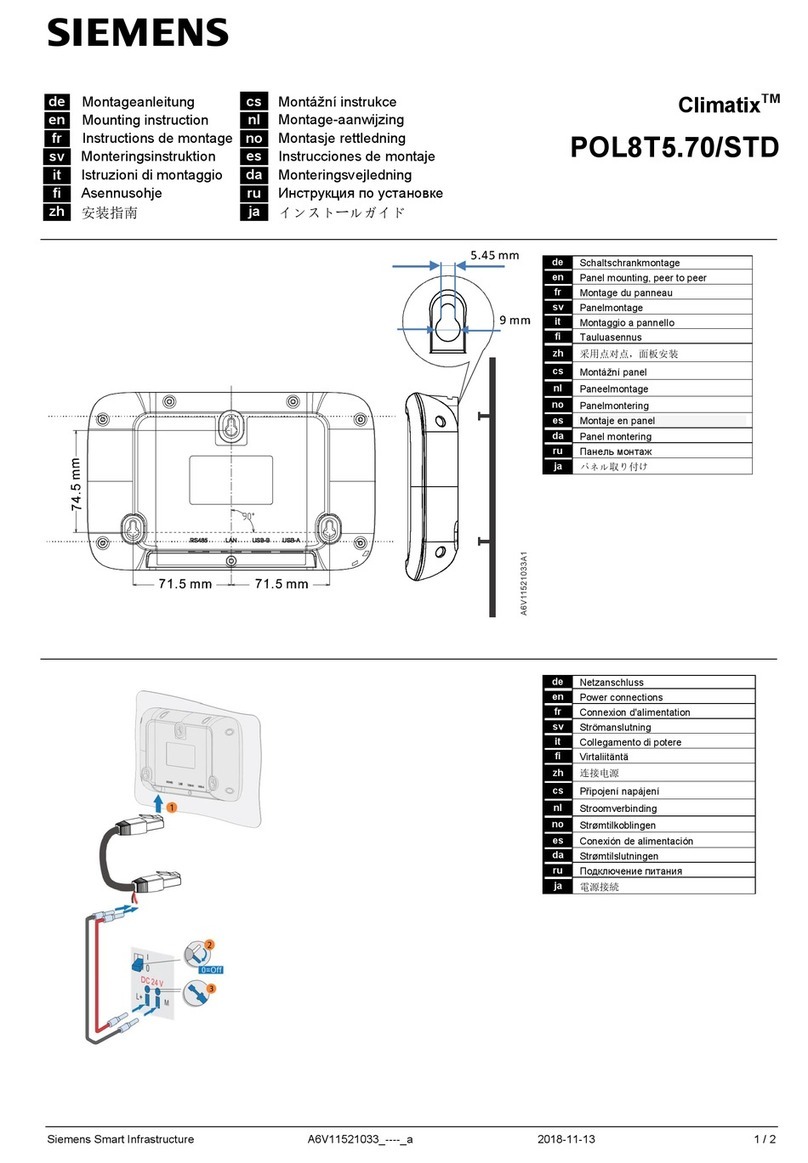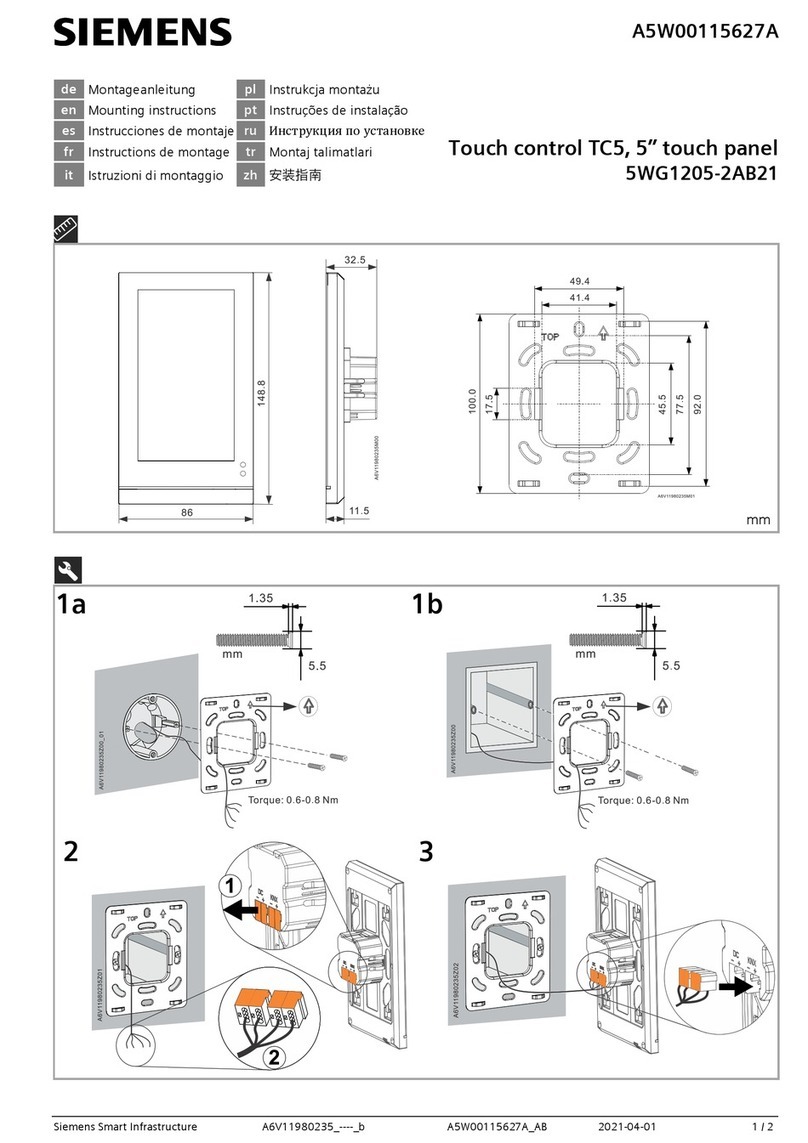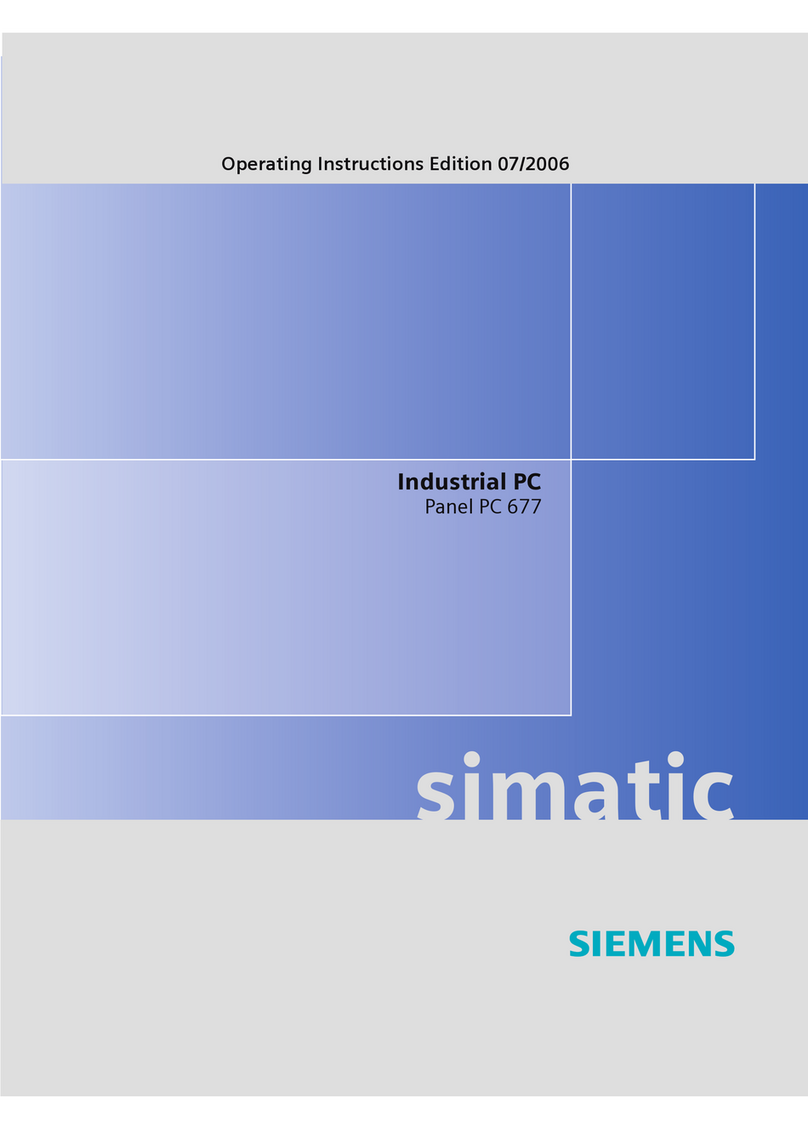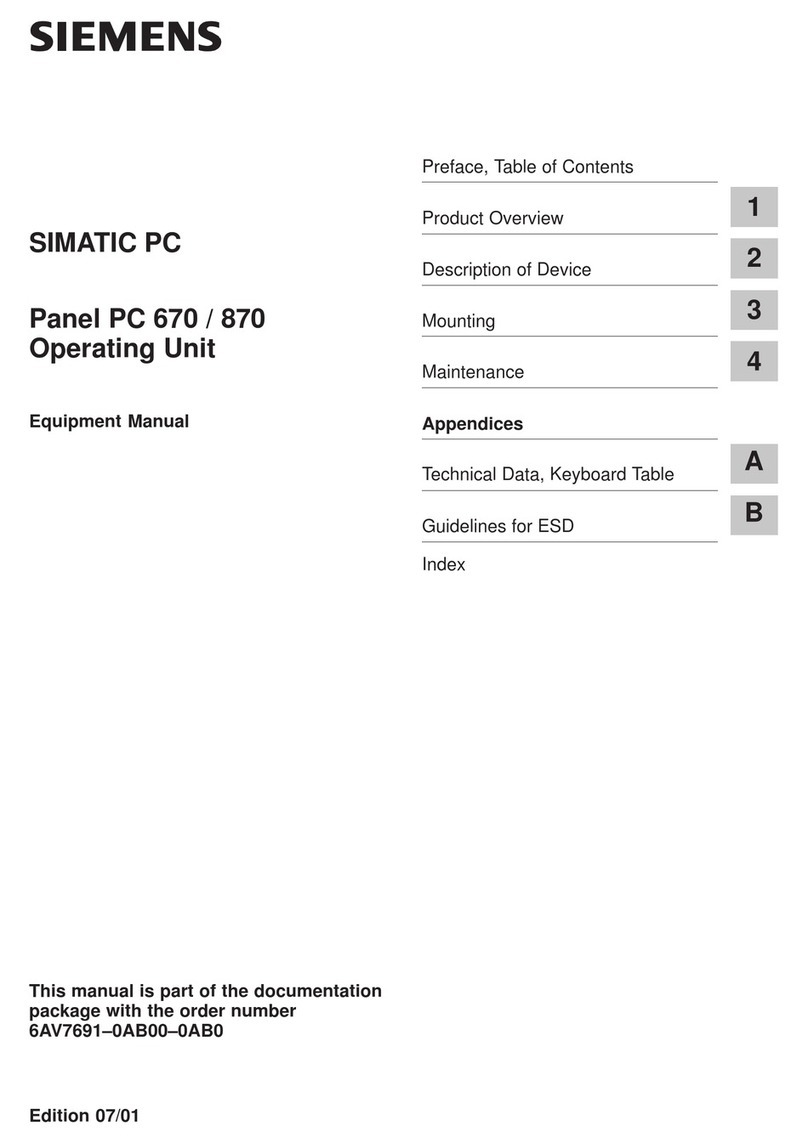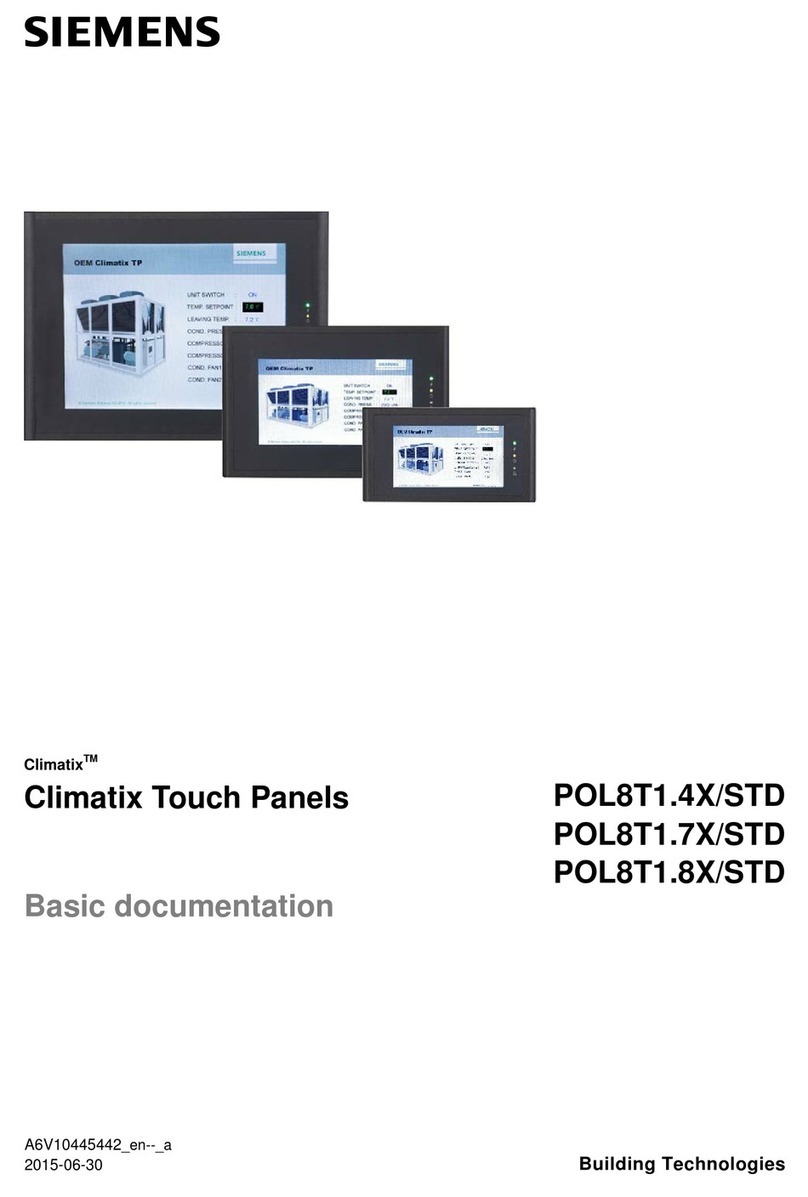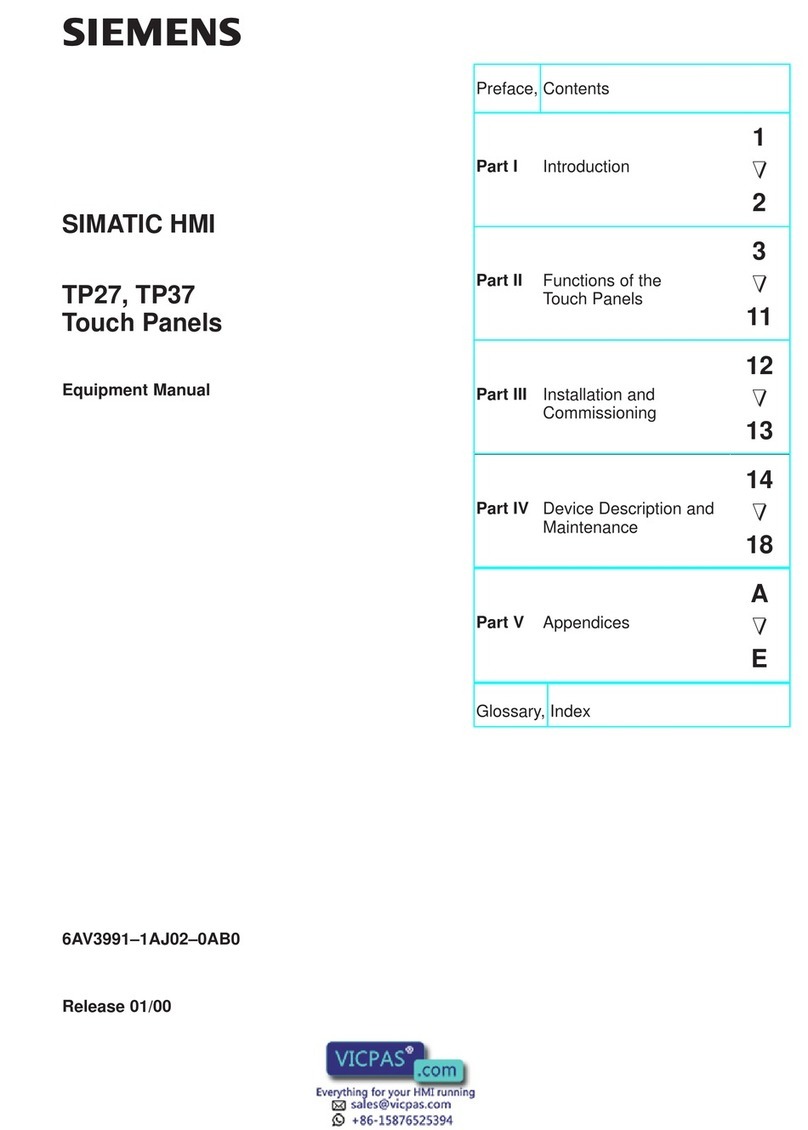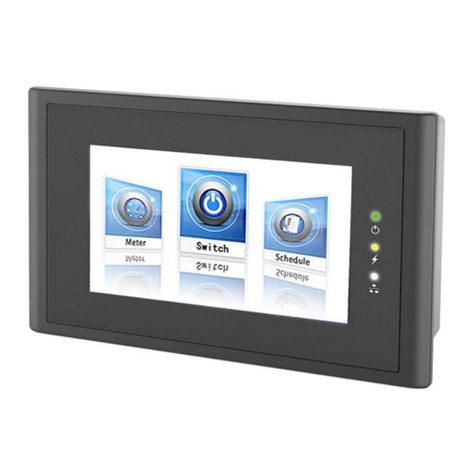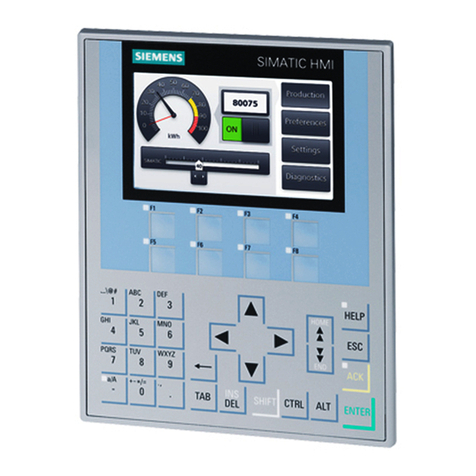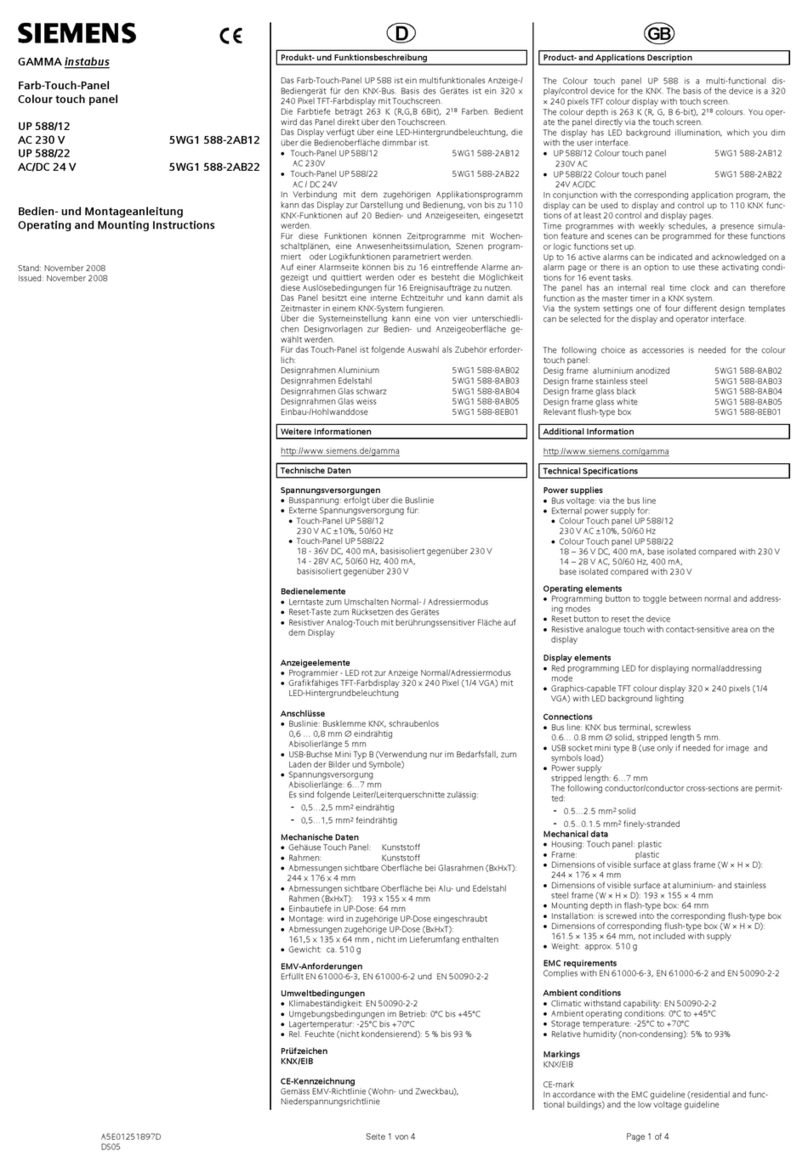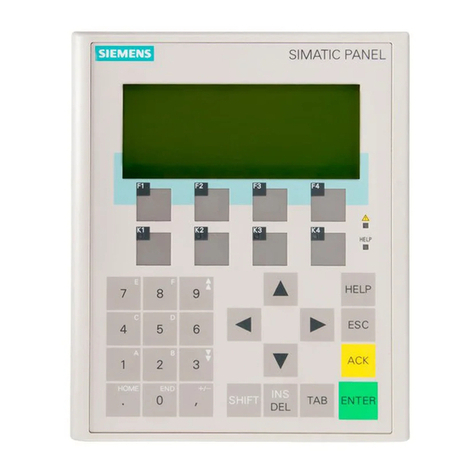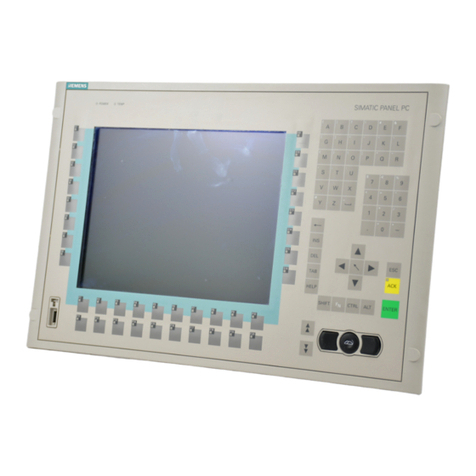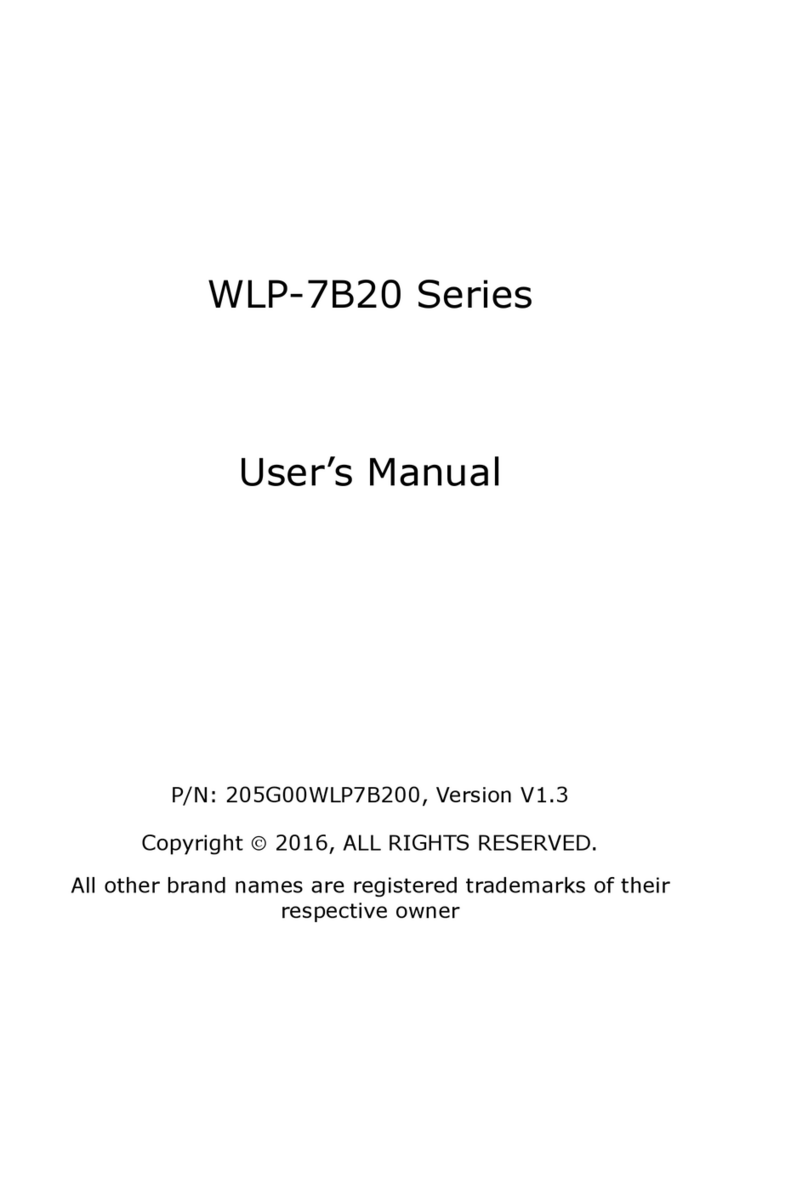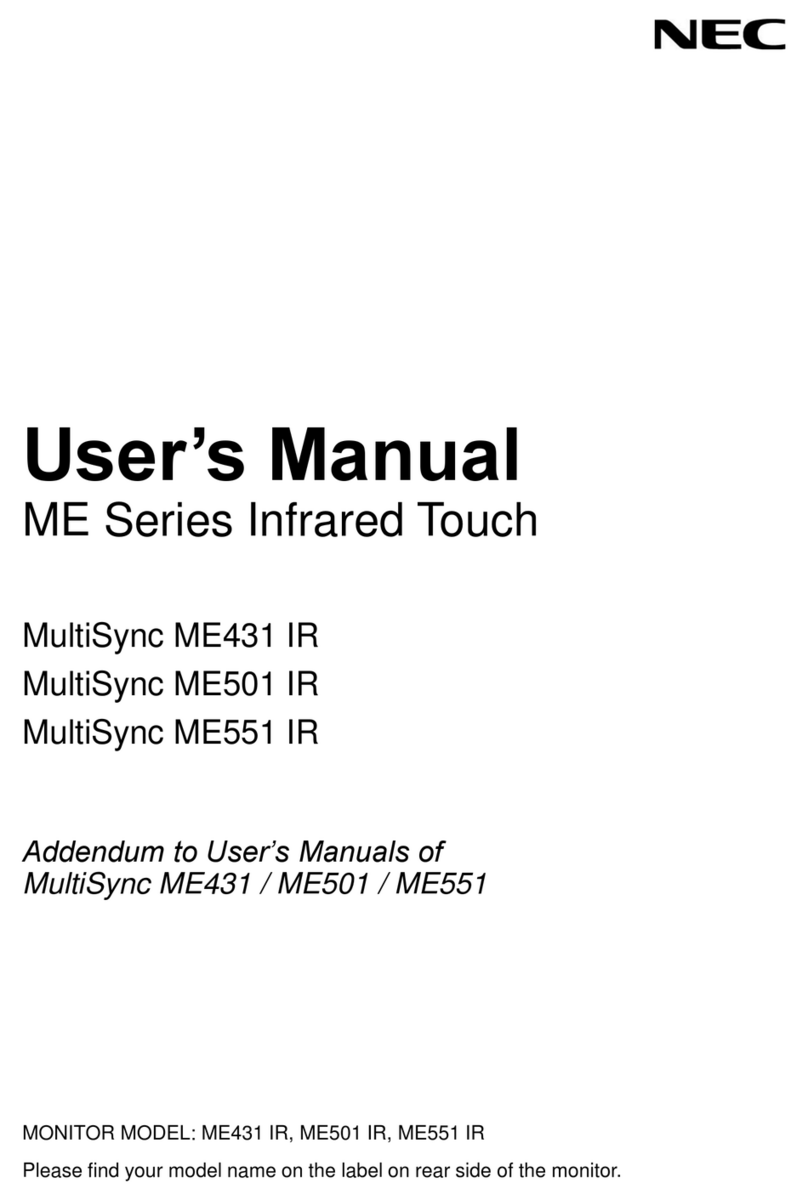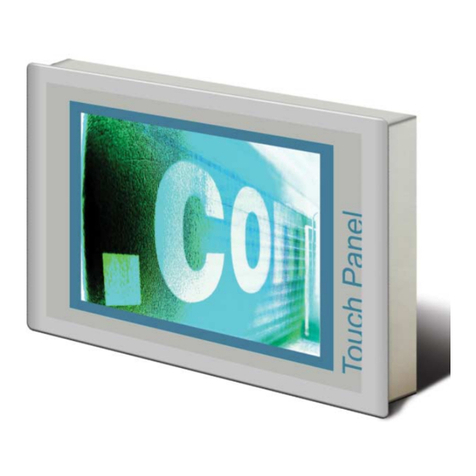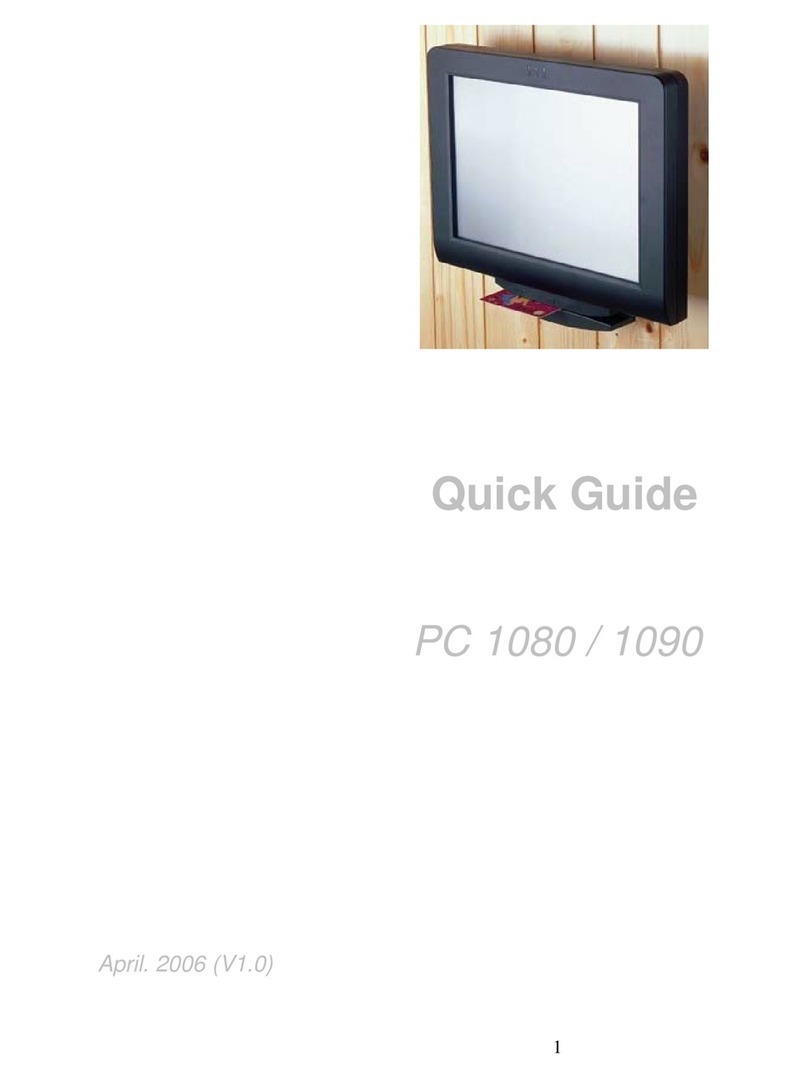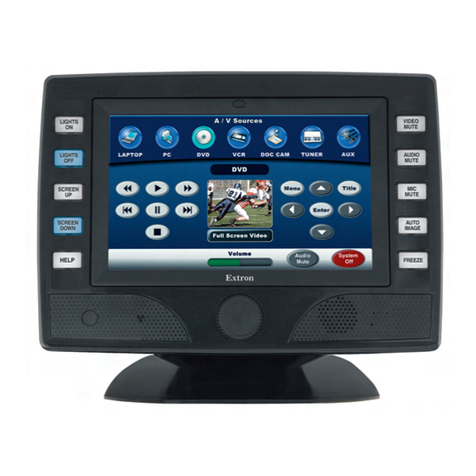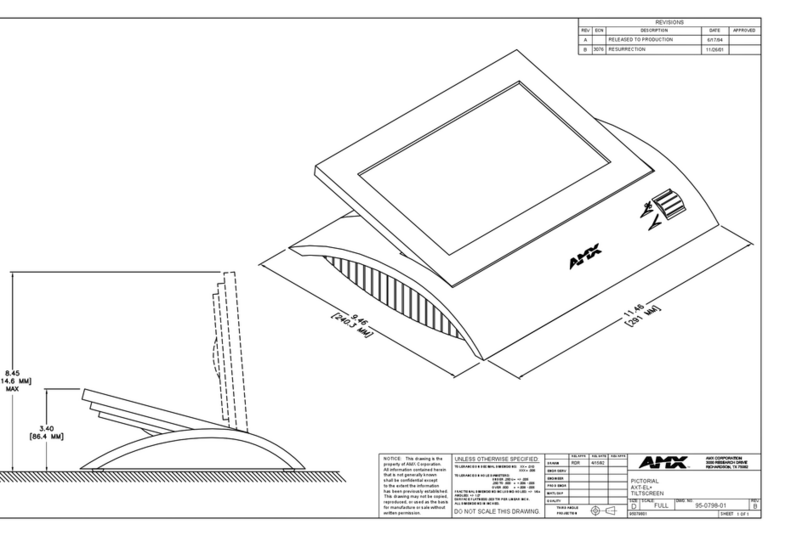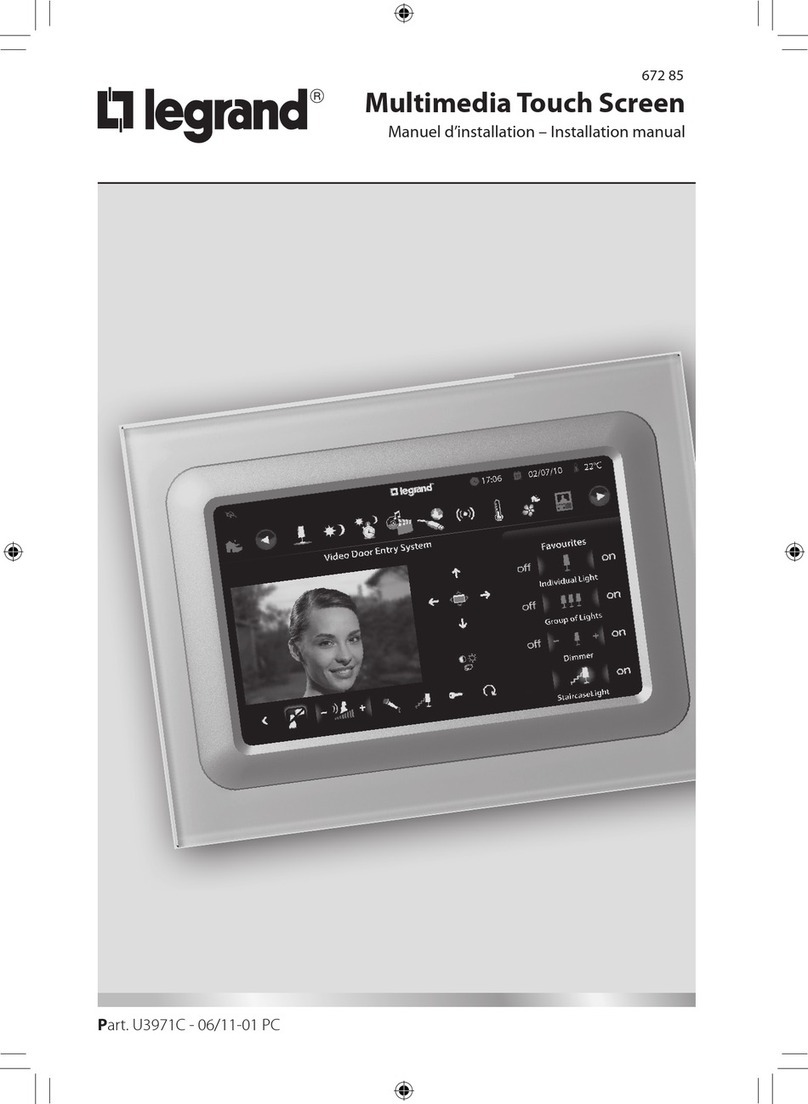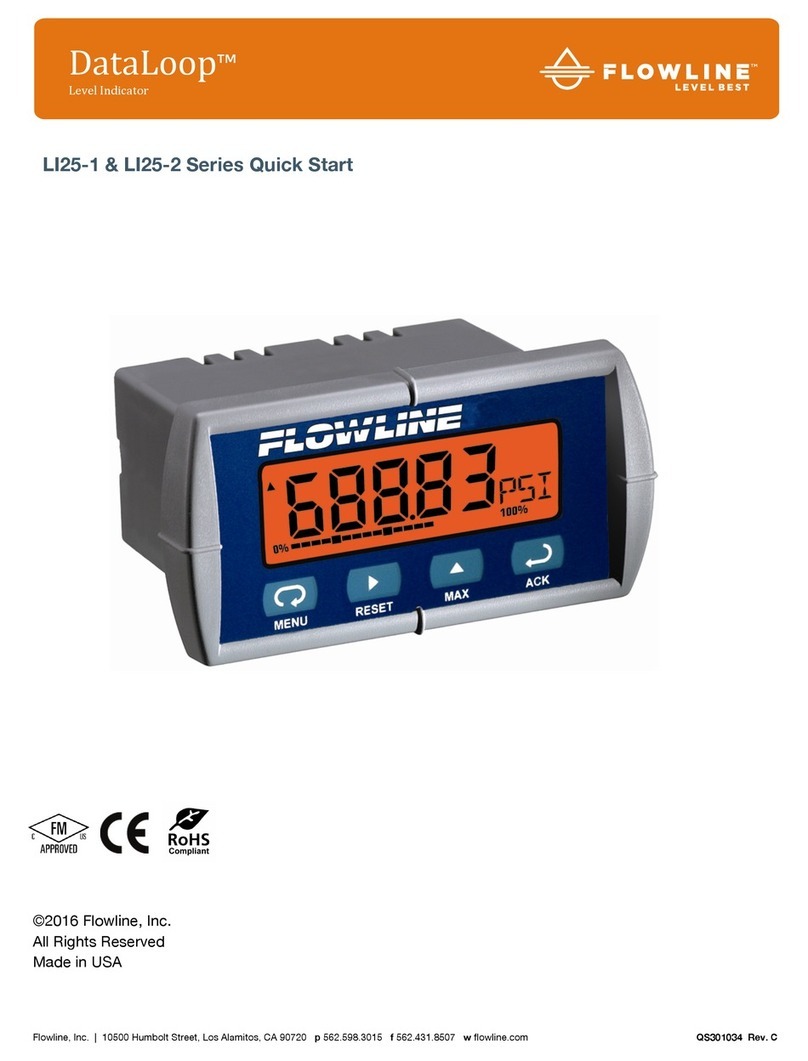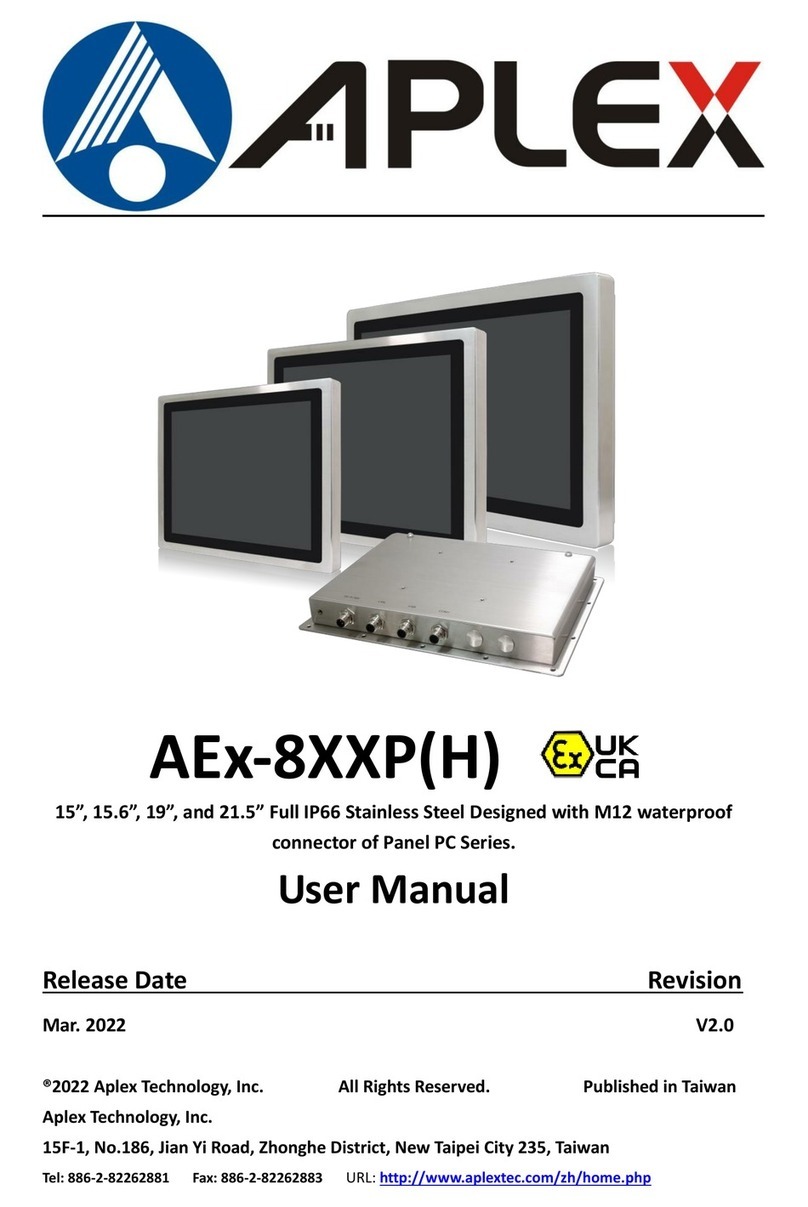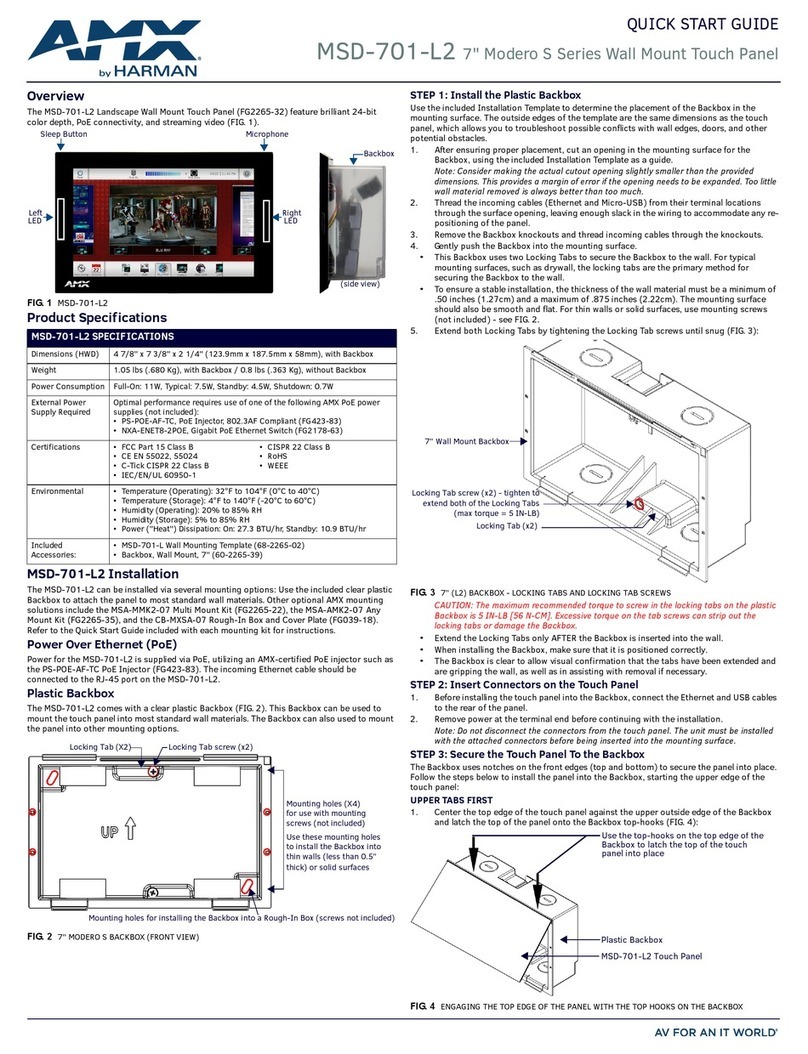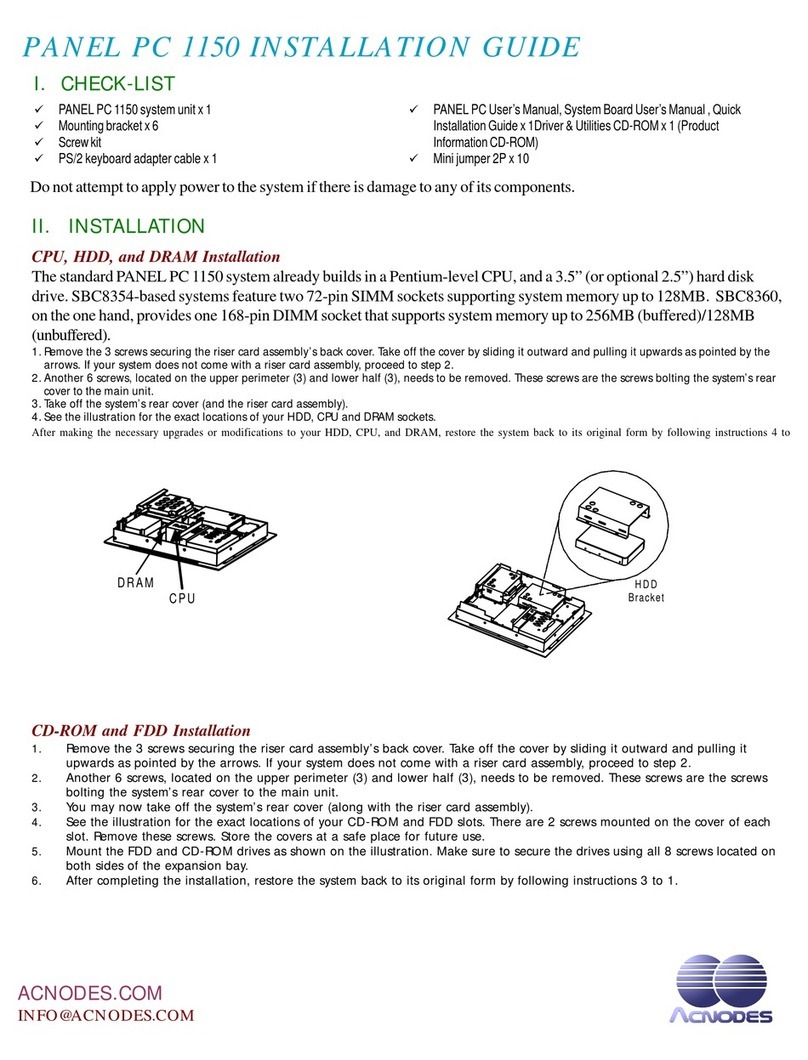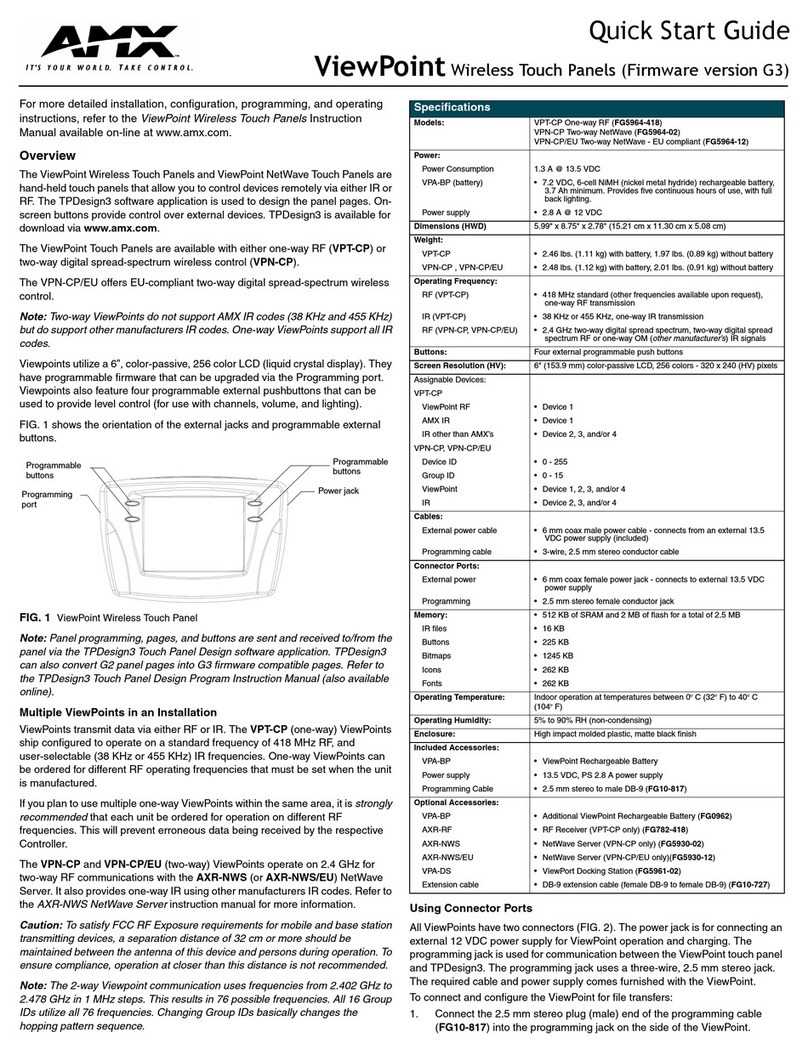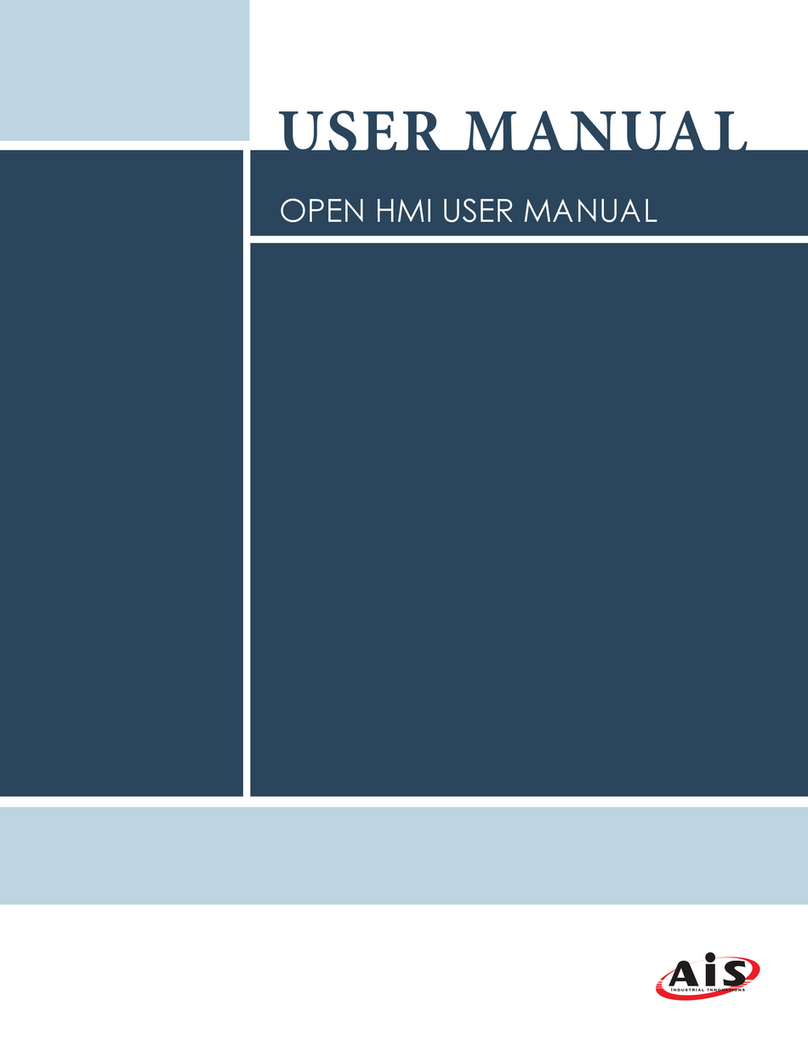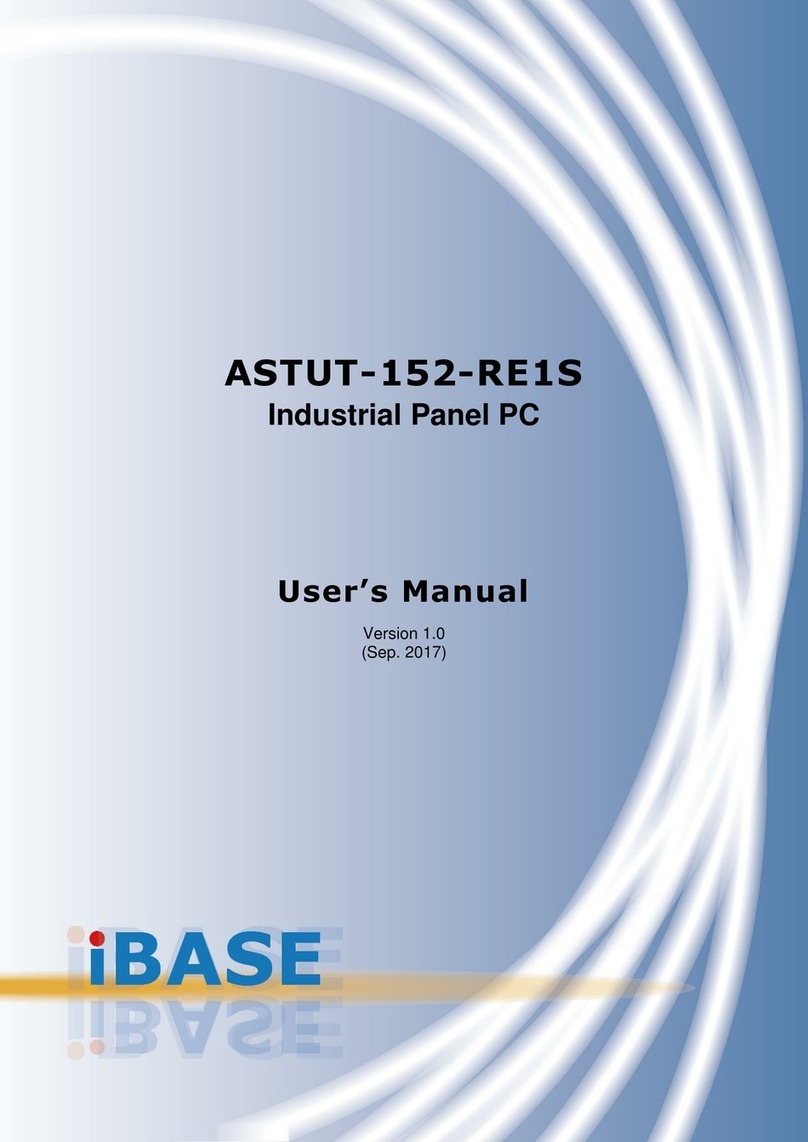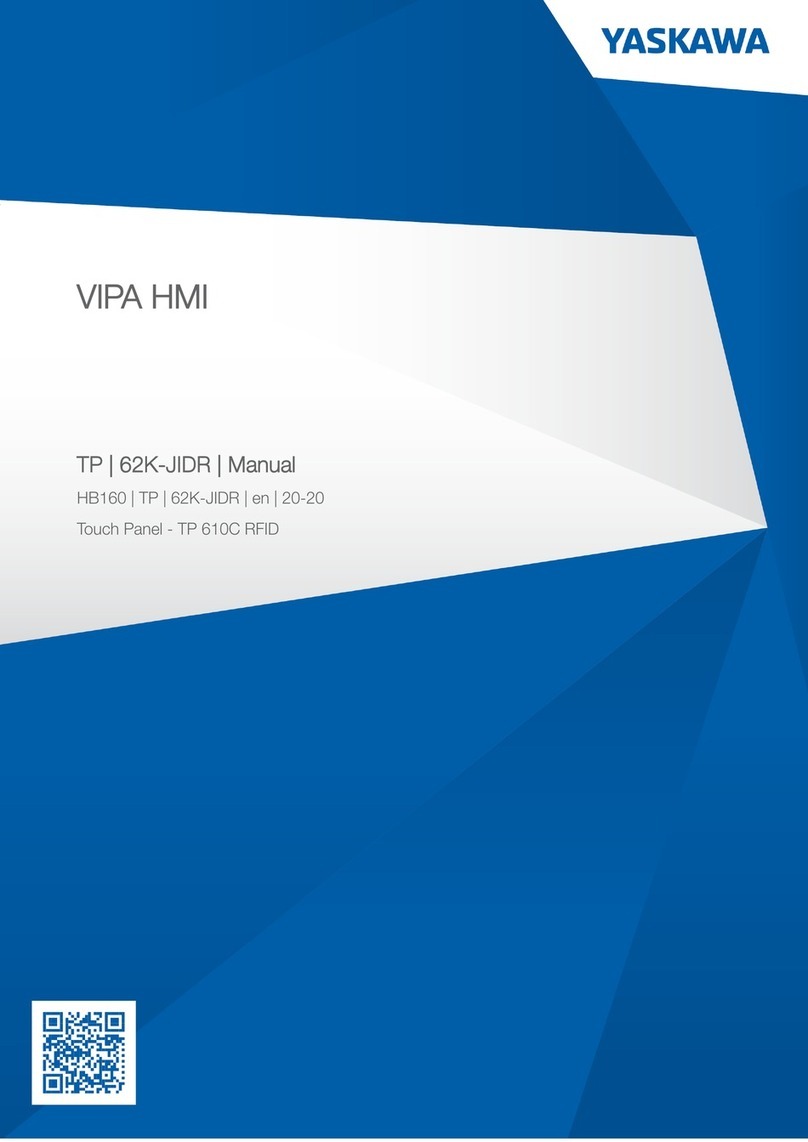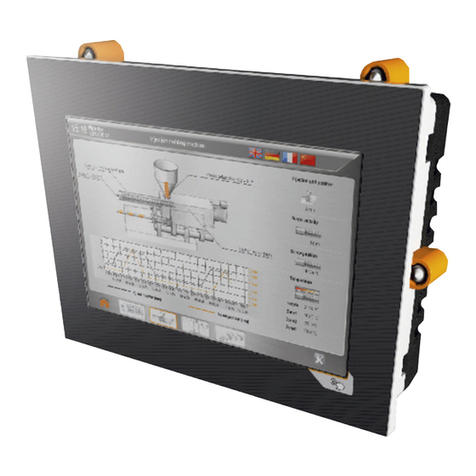GAMMA instabus
Technical Specification
November 2008
Colour touch panel UP 588/12 5WG1 588-2AB12
Colour touch panel UP 588/22 5WG1 588-2AB22
Accessories:
Design frame aluminium anodized 5WG1 588-8AB02
Design frame stainless steel 5WG1 588-8AB03
Design frame glass black 5WG1 588-8AB04
Design frame glass white 5WG1 588-8AB05
flush-type box 5WG1 588-8EB01
Siemens AG UP 588, 6 pages Technical Manual
Industry Sector, Building Technologies
Business Sector - Electrical Installation Technology © Siemens AG 2008 Update: http://www.siemens.com/gamma
PO Box 10 09 53, D-93009 Regensburg Subject to change without further notice
2.3.1.6/5
the same time, take note of the direction for mounting
the frame. Finally, the passepartout blind 6and the
ornamental frame 5are plugged on to the display and
thus held by the frame. The mounting direction must
also be observed when mounting the passepartout blind.
It is to be plugged in such that all elements of the display
frame are covered completely.
VCaution: Do not press directly on the display!
After mounting is completed, the device can be used (for
programming, see the application program description).
Please note the device can only be started after the
power supply and the bus voltage have been switched
on and this may take up to 1 minute.
Dismantling / exchanging the design frame
-First of all switch off the power supply
-The passepartout blind must be removed initially to
dismount the device or exchange the frame.
VCaution: Do not press directly on the display!
After removing the passepartout blind, the ornamental
frame can be taken off and the design frame exchanged
or the device dismounted completely.
Disconnecting the power supply (figure 4 "B")
-To dismount the power supply terminal (C4), this must
be pulled downwards over the detente and out of the
slot. The removal can be made easier by lifting the
power supply connection terminal (C4) slightly with a
flat-bladed screwdriver. To do this, push the blade of
the screwdriver into the centre of the terminal detente
between the power supply connection terminal (C4)
and the base of the slot.
Removing the bus terminal (figure 4 "A")
-The bus terminal (C3) is in the left slot. It consists of
two parts (C3.2 and C3.3), each with four terminal
contacts. You must take care that both test sockets
(C3.1) are not damaged, either with the bus conductor
(accidental attempt to plug in) or with the screwdriver
(e.g. when trying to remove the bus terminal).
-Push the screwdriver carefully into the wire connection
slot of the grey part of the bus terminal (C3.3) and
then pull the bus terminal (C3) out of the device. When
pulling out the red part of the bus terminal, the grey
part remains plugged in.
Notice: Do not lever the bus terminal outwards from
below! Danger of short circuit!
Disconnecting the bus terminal (figure 4 "A")
Pull off the bus terminal (C3) and pull out its conductor
(C3.4) by turning it alternately backwards and forwards.
Resetting the device if there is an error
You reset the touch panel in the event of an error with
the reset button. The reset button Fis accessible after
dismounting the design frame (see above). This is done
with the special tool. Should the display fail in rare cases
owing to a fault in the software or during the loading
process, tap the reset button. The device then restarts
within a few seconds and the design frame can be
remounted as described above. If the device will not
start, despite a reset, contact the manufacturer.
E
F
Extended programming via the front USB port
Pictures and symbols to order (see the user manual for
this) are transferred via the front mini-USB socket E. The
USB socket is accessible after dismounting the design
frame (see above). Connect the display to any PC with a
USB interface type A via a USB cable with a type B mini-
